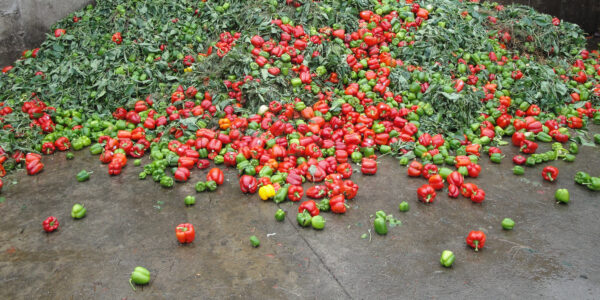
While some regions struggle with food shortages, others have the exact opposite problem. Food waste is an embarrassing issue that costs U.S. grocery stores millions each year. According to the Environmental Protection Agency, food retailers throw about 8 million tons of food items and their associated packaging into landfills annually. Some items that get thrown away have been damaged during transport. However, many fresh food items go bad on retail shelves. Explore how lighting impacts the shelf-life of perishable food items at today’s supermarkets.
Fades Food Colors
What strikes you first when you go to the grocery store to purchase fresh foods? If you are like most people, it is the amazing array of colors that influence your purchasing decisions the most. For example, in the produce department, from the rich red hues of bell peppers to deeply pigmented blueberries, the produce aisle sells itself. Appearances are so important to grocers that they toss out many perfectly good pieces of fruit or vegetables that are discolored or oddly shaped.
Grocery stores use warm-colored lights to make produce look fresh, but it is these same lights that can fade the color of fresh produce and shorten its shelf-life. According to Clemson University’s Department of Food Science, natural, fluorescent, and incandescent lights all cause photodegradation for fresh foods. The same is true in common LED lighting.
Drives Food Decay
Fruits and vegetables are living organic substances. When they absorb light, a chemical reaction occurs, which causes photodegradation. Besides causing a loss in color, photodegradation changes the healthy nutritional components in all fresh foods including produce. Light absorption impacts the vitamin content of milk and the quality of the fats and proteins of fresh meat among other effects. Depending on the duration of their exposure to light, your dairy, meat, deli, seafood, pastry, and other fresh foods can develop a bad flavor. This is the first sign that the fresh foods are not the freshest and that it is on the road to decay.
Promotes Food Odors
Supermarkets walk a fine line between offering fresh produce that is ripe and flavorful and throwing away fresh food that is overripe and going bad. While packaged fruits and vegetables have expiration date stamps that help grocers to navigate this tightrope act, other produce items must be inspected. Fresh foods that have been impacted by photodegradation will start to smell.
Photodegradation speeds the natural ripening and decay processes of fresh fruits and vegetables. However, grocery store displays are filled with pieces of produce that are at various stages of ripeness. When lights cause some pieces of fruit to become overripe while others are just fine, grocery store workers must hunt down the offending pieces that are destined for the trash bin. They may not have to do much investigating, however. Overripe produce attracts fruit flies.
Conclusion
A variety of initiatives are in the works to mitigate food waste risks to hungry citizens and cash-starved grocery stores. For instance, the Israeli startup Wasteless has developed a pricing algorithm that discounts expiring perishable food products in real time to reduce waste while still maintaining profit margins. Many grocers put unripe produce on the retail shelves and let them finish ripening while on display. However, a more elegant solution may be to modify the lighting that is used in display shelves and cases. You can find more information at www.safespectrum.com
